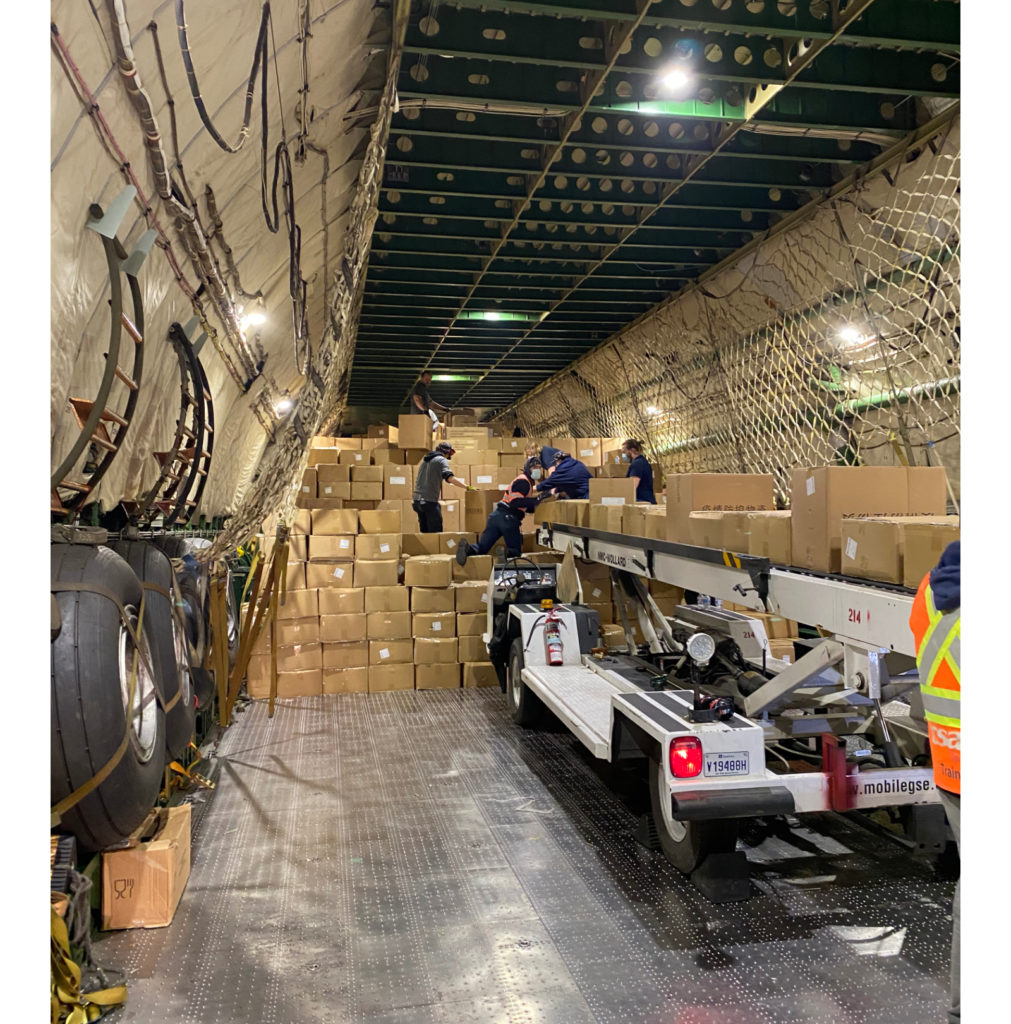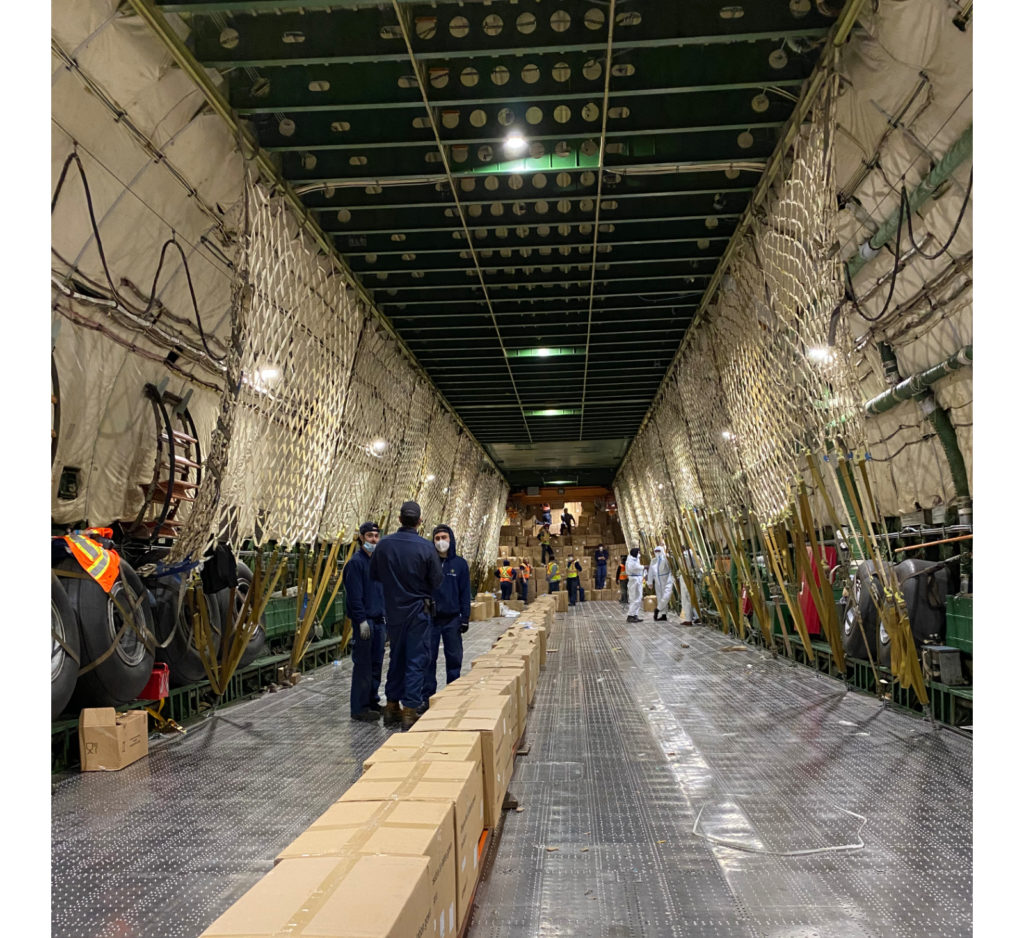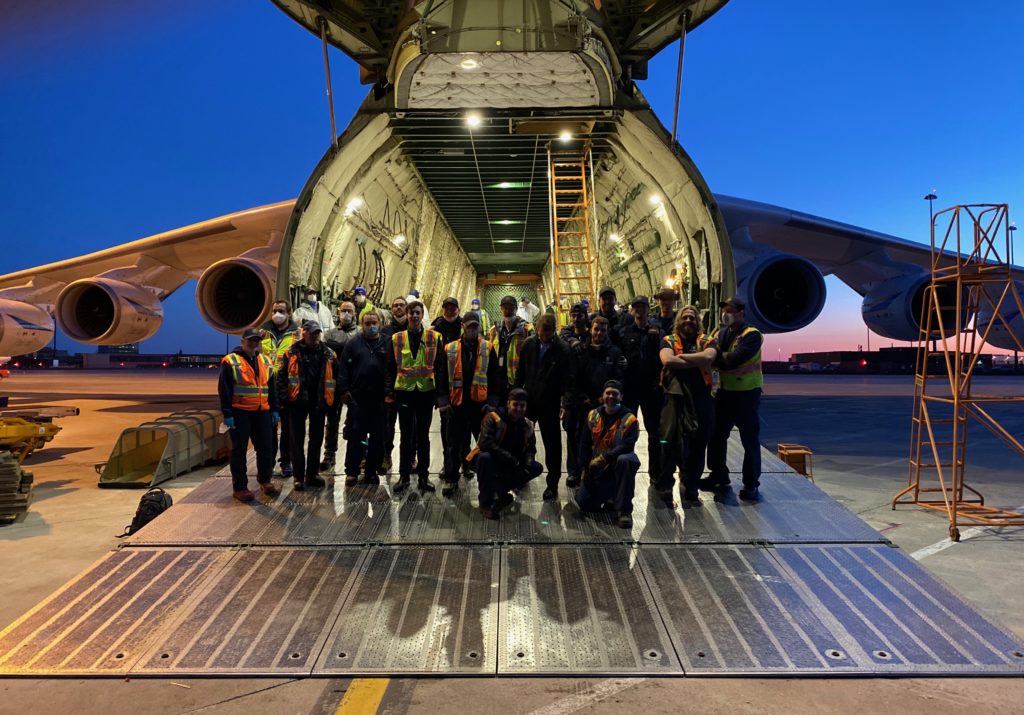Estimated reading time 14 minutes, 50 seconds.
When the Antonov An-225 Mriya — the largest cargo aircraft on the planet — touched down in Mirabel, Que., on May 1, it was greeted with a hero’s welcome.

Hundreds of aviation enthusiasts, plane spotters and media members flocked to the airport to get a good look at the massive aircraft, which hasn’t been seen at Mirabel International Airport since 2012.
“Two, three days before the fight was confirmed, we announced on our social media … that the Antonov was coming to Mirabel,” said Marco Prud’Homme, president of Nolinor Aviation, the company responsible for chartering the Ukrainian beast to bring personal protective equipment (PPE) from China to Canada. “Normally, there’s a bunch of [spotters] that do show up — maybe 10, 15 to take pictures. But for unknown reasons, or maybe because there’s not much to do in Quebec right now … we ended up having 12 media teams onsite, and hundreds and hundreds of people just showing up to see the aircraft land.”
The interest is understandable. The colossal plane is a marvel that boasts the largest wingspan of any aircraft in operational service at 88.4 metres, is powered by six turbofan engines and is the heaviest aircraft ever built, with a maximum takeoff weight of 640 tonnes.
But for a mission that had proven to be a massive logistical undertaking already, the added crowd of onlookers and media members itching for a glance at the An-225 offered another challenge in and of itself. To accommodate all who showed up, the Nolinor team got to work.
“The way we [handled them] is we did it on a first come, first served basis. We had two vans and we brought two teams at a time. Each of those took some pictures, conducted interviews and all that and then came back, and we did a rotation like this starting at eight o’clock [p.m. local time] until 11 o’clock,” Prud’Homme explained. “After that, everybody had all the material they needed.”
While Prud’Homme and other members of Nolinor’s management team did their job to ensure everyone who showed up got their time with the main attraction, 25 ground crew members got to work unloading the roughly 1,000 cubic metres of medical gowns packed into the aircraft — almost all of which had to be hauled out by hand over a seven-hour span.

For Prud’Homme though, this was the home stretch of a mission that offered up logistical hurdles every step of the way. The An-225’s very presence at Mirabel was the result of hard work to overcome a language barrier, a 16-hour delay on the ground in China and the risk of coming home empty-handed.
Chartering a Goliath
Before the COVID-19 pandemic, Nolinor Aviation’s typical business involved chartering its fleet of various aircraft to service passenger and cargo operations throughout North America, mostly in northern Quebec and Ontario.
But as the crisis unfolded, and the number of those flights rapidly diminished due to COVID-19 precautions, the carrier had to get creative.
“We had to start looking at doing different types of business,” Prud’Homme told Skies. “We did a few flights getting Canadians back to Canada — one from Guatemala and another from Morocco — then started receiving requests to transport cargo between China and Canada.”
According to Prud’Homme, the company received roughly 25 different requests for jobs of this nature, and sifted through these until they landed on a group that “seemed to be more serious.”
“We finally reached out to this group and they had a lot of boxes to carry with protective equipment, roughly around 1,000 square metres of boxes from China to Quebec.”
Since none of the aircraft in Nolinor’s fleet was capable of hauling that much cargo in one go, the company started hunting for a solution.
“We reached out to Momentum Solutions, they’re a broker who specializes in those types of logistics, and they’ve been using us for many years,” Prud’Homme said. “But this time around it was us calling them, saying, ‘Well, can you find an aircraft on the market that could haul that many boxes?’ ”
It was Momentum who suggested the Antonov An-225 for the flight. But Nolinor’s client — a broker for the Province of Quebec — was hesitant to use the Ukrainian aircraft at first. It took other’s misfortunes to sway their opinion and sign off on using the Herculean plane.
“We heard about the cargo flight that went over there and came back empty and we kind of figured out that maybe one of the edges of the An-225 was that there was more than one crew on board the aircraft, that could even sleep inside the aircraft,” said Prud’Homme. “So if we had any delay in China, this aircraft would be able to manage that problem and then come back after the delay. So we decided to go ahead with this aircraft.”

Of course, as if predetermined, that delay came to fruition.
“Upon the date of the flight, when the aircraft left Ukraine and landed in China, the boxes were not ready at the airport when it arrived,” Prud’Homme recounted.
By the time the Antonov landed and the cargo arrived at the airport, Chinese customs had closed, meaning the aircraft would have to stay parked at the airport for eight hours until they had opened — the aircraft’s aforementioned advantages were being put to use before the cargo flight even took off for Quebec.
While this massive delay may have deterred less resourceful carriers, someone suggested reaching out to a well-positioned contact to ensure the mission went ahead as planned. Nolinor called on Jean-François Lépine, a former CBC journalist and television host who was in China as a delegate for the Province of Quebec.
“He really helped us by finding people in China who are able to speak French and English and got them on site because of the cultural and language gap over there,” Prud’Homme explained. “So he was able to send someone to the airport [to help co-ordinate], and was able to tell us when the boxes had arrived even though customs was closed. [From there], that person was able to go talk with the crew to work out the next steps.”
Another thing that factored into the flight’s eventual success was the pickup location. Rather than the busier Shanghai Airport, which saw several cargo flights leave empty-handed due to the volume of traffic, Nolinor arranged for the shipment to be picked up at the less crowded Tianjin airport.
But after the eight-hour delay due to customs, the crew faced another eight hours hand-loading each box onto the aircraft without the help of pallets or “cookie sheets” — flat metal sheets that are used to move several boxes of cargo at once.
“You can pretty much imagine with the 16-hour delay on site, any other carrier would have had to come back empty again from China to Canada,” Prud’Homme said, highlighting the Antonov’s ability to host the crew overnight. “So we were quite happy to have this aircraft on hand.”
Once everything was loaded, the An-225 was off. After making a technical pit stop in Anchorage, Alaska, the massive aircraft touched down at Mirabel around 8:30 p.m. EDT the following night and was greeted by the media circus anticipating its arrival.

On the ground in Mirabel
After dealing with the media, Prud’Homme and other members of Nolinor’s management team rolled up their sleeves and got to work helping unload the aircraft.
The ground crew had already been at it for three hours at that point, and faced another four getting the boxes full of medical gowns out of the fuselage and into transport trucks.
While most of the boxes were eventually moved out by hand in a line, Nolinor began the unloading process by using a series of aircraft belt loaders. While that helped to expedite the process initially, the wind factor mixed with the size of the Antonov’s fuselage prevented the team from continuing with the mechanical assistance.
“We had three belt loaders unloading in the cabin that all run on fuel. So when you have three engines running around, and the wind pushing the air slowly but surely inside [the massive cabin], there were a lot of fumes and at one point someone started to get sick. So we realized we had a problem,” explained Prud’Homme. “We shut all those down, removed everyone from the interior, waited a bit, and then we put some rollers in.”
With 16 rollers in place, much like the ones that can be found at the end of grocery store checkouts, the ground crew formed a line and started unloading by hand. Several members climbed atop the boxes and handed them down to workers waiting at the beginning of the line of rollers. From there, the boxes were hand-fed along the rollers to the back of the trucks, where more crew were stationed for the loading process. It was a total team effort, Prud’Homme said, one designed to ensure “that no box stopped along the way.”
While the work crew initially tried to respect social distancing measures, “at the end it was hard to keep, because we had to form a chain,” said Prud’Homme. Working in close proximity to unload the aircraft was the team’s only option, and although most of them began the night wearing medical masks, the labour-intensive operation made it all the more difficult to breathe through them as the shift wore on.
“We tried as much as we could, but it was not easy to do so … I would say it was more intensive work than we had anticipated. Even though the boxes weren’t heavy [initially], when you’re carrying them for five hours, they do become heavy.
“But I think it was a risk that everyone on the team knew about and the goal was to help — we brought thousands of blouses to protect the folks working in the health system here,” Prud’Homme added. “So I think we had a bigger scope of what we were doing rather than simply unloading an aircraft.”

Twenty-five people, in two teams, worked for seven hours to get those boxes out of the plane and into the back of the trucks — a massive effort on par with the scale of the gigantic aircraft itself.
At the end of the shift, after all the trucks were loaded up and on their way to medical sites throughout Quebec, the exhausted ground crew stuck around.
“Pretty much everyone there was an aviation enthusiast. So having the opportunity and the chance to unload this type of aircraft, everybody was quite happy,” said Prud’Homme. “By the last truck, people were kind of tired and looking forward to the end of it, because we were starting to see the sunrise. But even then, we stayed a little bit longer to see the aircraft take off.”
Who could blame them? The mighty Antonov An-225 was in town for the first time in almost a decade and was only staying the night. For the same reasons that drew the crowd of media members and aviation enthusiasts the prior evening, the exhausted crew stuck around a little while longer after the job was done — to witness one of the most awe-inspiring sites in aviation as the massive An-225 took to the sky.









Great stuff!!
Is this available in audio?
Visual impairment takes literally hours to absorb rather than what I should think a few minutes of read time!
So interesting but so hard to squint at each word! Takes sooo long!
What a go, Prudhomme!
Well done, Chapeau!
Amazing effort, well done.
My question was, did the Antonov LEAVE Toronto/Montreal empty?